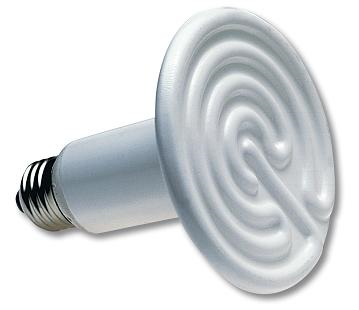Hi,
I bought a male Panther Chameleon that I named Mo about two or three months ago. When I first got him, he was eating mealworms out of my hand daily (3-5)..as well as eating crickets (about fifteen in a week). The crickets are dusted before they are put in the cage. I cleaned his cage five days ago. Since then he has only eaten one mealworm and no crickets. He also hasn't pooped, there is one urates (the white things?) but it is kind of yellow.
I called the place I bought him and they said to soak him in an inch of water for 45 minutes to help him poop, but nothing happened.... I'm just worried that there is something wrong because his eating and pooping schedules seem really off from what they were just a week ago. Am I overfeeding by chance? Is this a more serious problem that I need to see a vet about?
A little more info:
I handle him maybe once a week at most. He gets misted two to three times a day, I use a spray bottle to get the leaves in his cage wet, and he also has a dripper that runs all the time. And his eyes don't look sunken in.
I have a screen cage. For lighting I have a Flukes UVB 75W, Flukes UVB 100W, and a normal house light (compact fluorescent). I usually only have one of the red lights on at a time. The white light is on for 10 hours a day.
His cage is usually 95-80 during the day and 70-80 at night. To measure the temperature I have a small thermometer near the top of the cage.
There are real branches in his cage at three or four different elevations, with more sticks to connect everything. There are also two different groupings of fake leaves in his cage. His cage is situated in my living room in the corner, on a table. The top of the cage is around six feet off the ground.
Thanks for your help!
I bought a male Panther Chameleon that I named Mo about two or three months ago. When I first got him, he was eating mealworms out of my hand daily (3-5)..as well as eating crickets (about fifteen in a week). The crickets are dusted before they are put in the cage. I cleaned his cage five days ago. Since then he has only eaten one mealworm and no crickets. He also hasn't pooped, there is one urates (the white things?) but it is kind of yellow.
I called the place I bought him and they said to soak him in an inch of water for 45 minutes to help him poop, but nothing happened.... I'm just worried that there is something wrong because his eating and pooping schedules seem really off from what they were just a week ago. Am I overfeeding by chance? Is this a more serious problem that I need to see a vet about?
A little more info:
I handle him maybe once a week at most. He gets misted two to three times a day, I use a spray bottle to get the leaves in his cage wet, and he also has a dripper that runs all the time. And his eyes don't look sunken in.
I have a screen cage. For lighting I have a Flukes UVB 75W, Flukes UVB 100W, and a normal house light (compact fluorescent). I usually only have one of the red lights on at a time. The white light is on for 10 hours a day.
His cage is usually 95-80 during the day and 70-80 at night. To measure the temperature I have a small thermometer near the top of the cage.
There are real branches in his cage at three or four different elevations, with more sticks to connect everything. There are also two different groupings of fake leaves in his cage. His cage is situated in my living room in the corner, on a table. The top of the cage is around six feet off the ground.
Thanks for your help!






